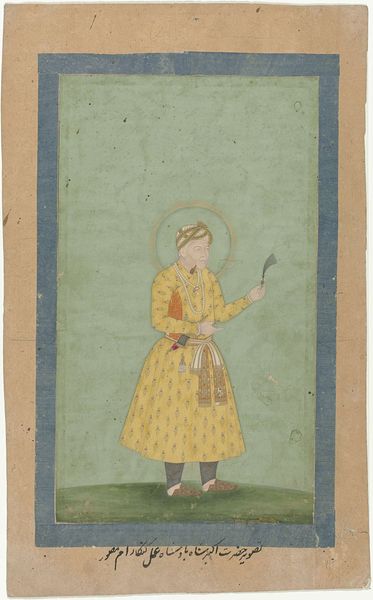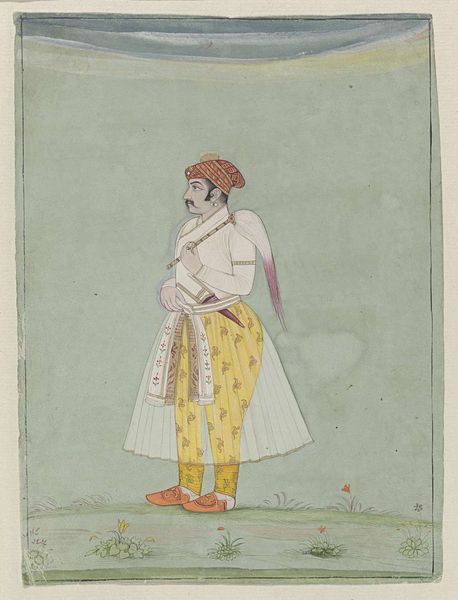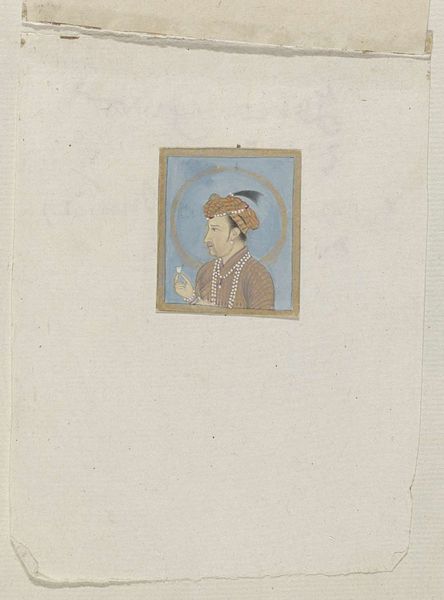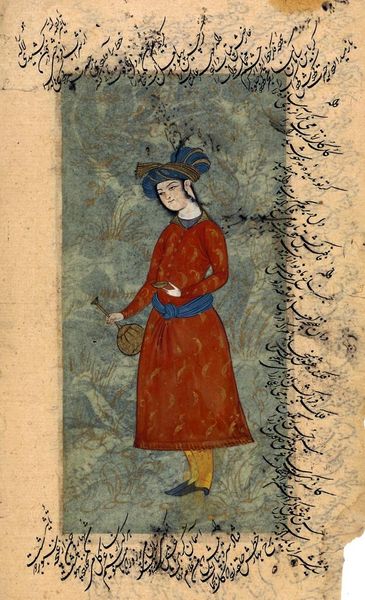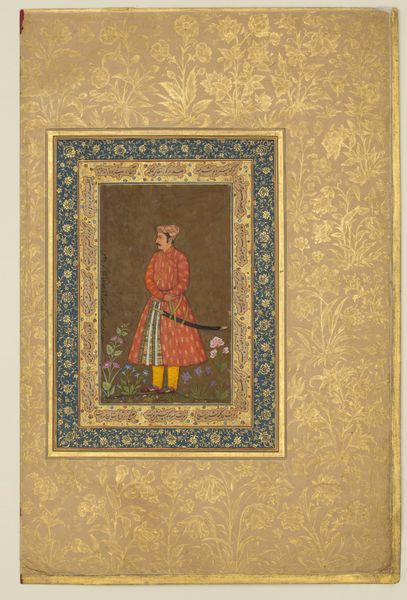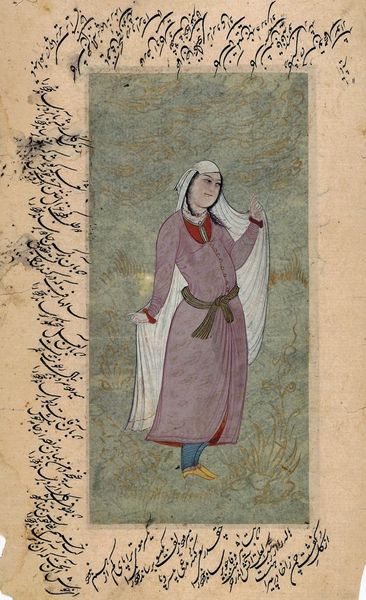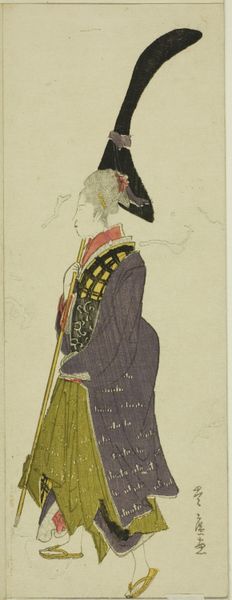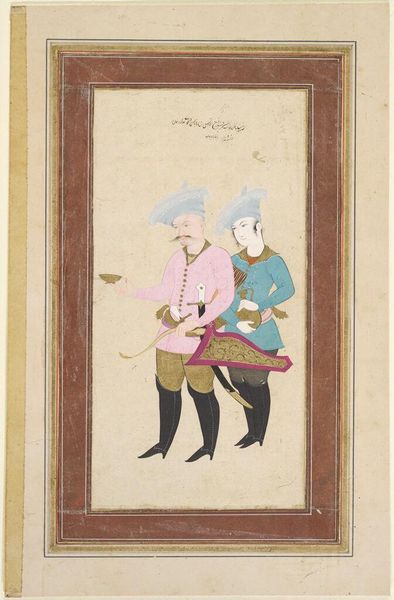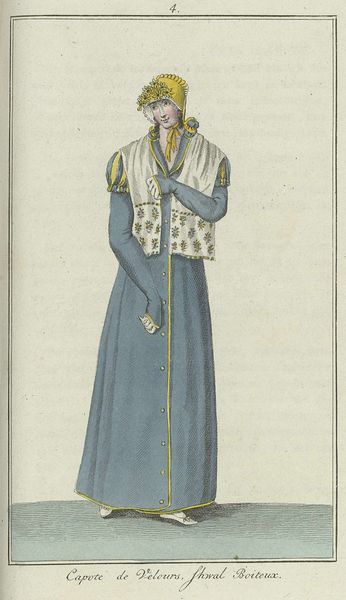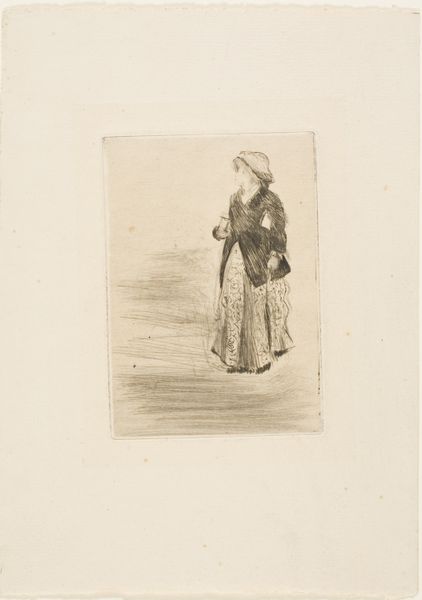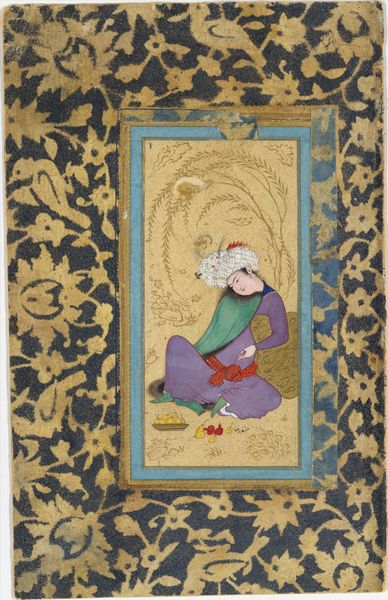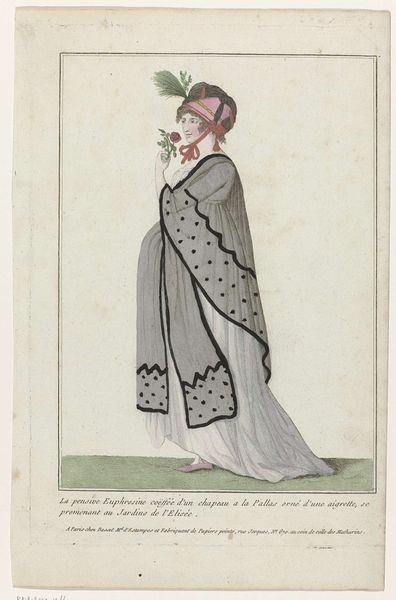
painting, watercolor
#
portrait
#
aged paper
#
toned paper
#
muted colour palette
#
painting
#
asian-art
#
personal sketchbook
#
watercolor
#
coloured pencil
#
sketchbook drawing
#
islamic-art
#
watercolour bleed
#
watercolour illustration
#
sketchbook art
#
miniature
Dimensions: height 243 mm, width 360 mm
Copyright: Rijks Museum: Open Domain
Curator: This exquisite "Persian Miniature," dating from around 1660-1687, offers a glimpse into a world of meticulous detail and artistic finesse. It's currently held in the collection of the Rijksmuseum. Editor: Immediately, what strikes me is the flatness. Not in a bad way, but how the materiality of it, probably watercolour, flattens any sense of real depth—makes it feel like something precious lifted from the pages of a book. Curator: Precisely. It's likely watercolour and coloured pencil on aged paper. It possesses the intimate quality of a page from a personal sketchbook. I see in it not just a portrait but perhaps a reflection on status. His attire hints at opulence and, dare I say, a touch of youthful naiveté, rendered with delicate precision. The texture in the coat is outstanding. Editor: Agreed, you can see the layers and layering, the hand that painstakingly crafted it. Think about the labour involved, especially considering the size of this miniature. It prompts questions about patronage: who commissioned it? Who were the intended viewers, and what materials were accessible, or even encouraged, during its creation? Curator: It brings up the concept of consumption as well, not in the sense of merely ‘possessing’ it but consuming its meaning, sharing in a narrative tradition through this image. Notice, too, the choice of colours - very subtle and muted, yet they somehow give an amazing vivacity to his expression. The subtle bleeding of the watercolour around his turban and dress speaks to both the delicacy of the medium and also the inherent uncontrolled forces one experiences in artwork. It hints at spontaneity within a rigidly defined form. Editor: And it forces a new appreciation for something usually labeled "sketchbook art." The supposed hierarchy crumbles, forcing us to rethink those value judgments based on supposed skill. It’s a social record as much as it is art. Curator: Indeed! What at first seems like a simple portrait then unveils so much, prompting reflections about identity, power, artistry, and the very materials from which this vibrant echo from the past has come. Editor: I find myself wanting to dive deeper into the history of pigments from that era – understand what constituted "precious" colour. What were the political forces governing those economies of production?
Comments
No comments
Be the first to comment and join the conversation on the ultimate creative platform.
